Understanding the Importance of Precision in Aluminium Extrusion
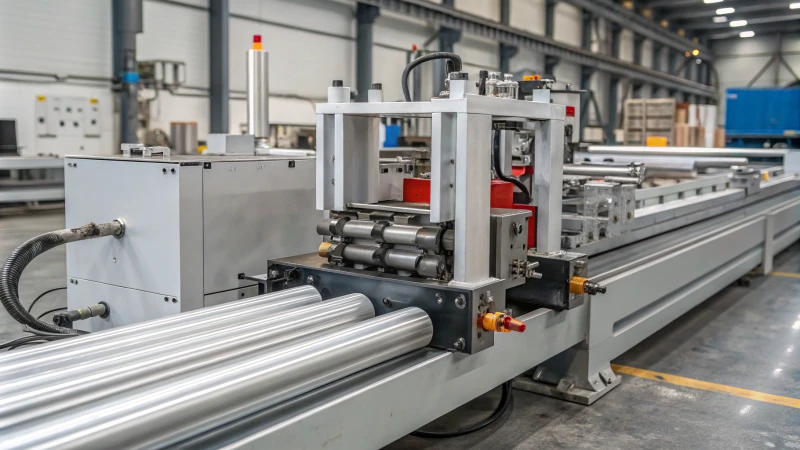
In industries reliant on aluminium components, precision in extrusion is a non-negotiable factor for success.
Precision in aluminium extrusion ensures that profiles meet exact specifications, enhancing product quality and reducing waste. This accuracy is crucial for industries like automotive and aerospace, where precise fit and performance are imperative.
While understanding the basic importance of precision is essential, delving deeper into its impact on different aspects of production reveals how it significantly influences business outcomes. Let’s explore how precision shapes quality, efficiency, and competitive advantage.
Precision in extrusion reduces material waste significantly.True
Accurate extrusion ensures minimal excess material, lowering waste.
Precision is less important in automotive than aerospace.False
Both industries require high precision for safety and performance.
What Does Precision Mean in Aluminium Extrusion?
Precision in aluminium extrusion is key to ensuring that each profile meets exact specifications, enhancing product quality and functionality.
Precision in aluminium extrusion involves maintaining tight tolerances during the shaping process to ensure that profiles meet specific design requirements. This accuracy is crucial for industries needing reliable components.
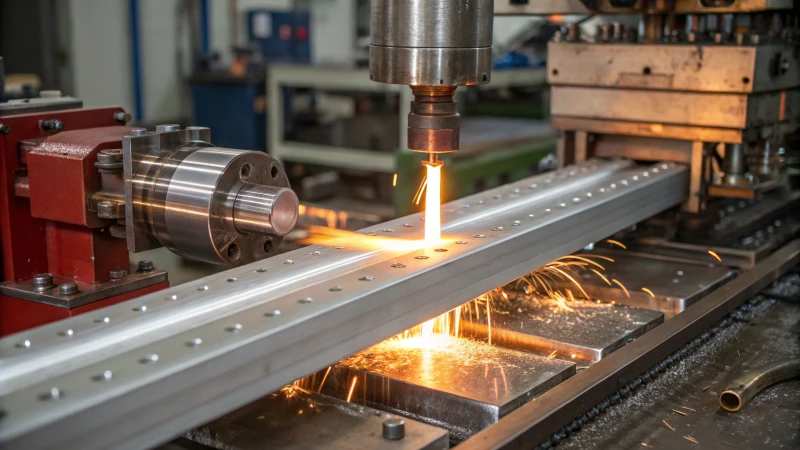
The Role of Tolerances in Precision
Aluminium extrusion requires adherence to precise tolerances, which define the allowable deviation from specified dimensions. These tolerances are critical in ensuring that the extruded profiles fit perfectly1 into their intended applications, minimizing rework and reducing waste.
Impact on Industries
Industries like automotive and aerospace rely heavily on precise aluminium extrusions. Any deviation can lead to assembly issues, affecting product performance. Precise extrusions ensure2 consistent quality, improving reliability in demanding environments.
Technological Advances Enhancing Precision
Modern technology, such as CNC machines and automated quality control systems, plays a significant role in achieving precision. These tools allow manufacturers to produce profiles that consistently meet high standards.
| Technology | Function |
|---|---|
| CNC Machines | Precision cutting and shaping |
| Automated Systems | Continuous measurement and quality assurance |
Precision and Cost Efficiency
Accurate extrusion not only enhances product quality but also optimizes material usage, resulting in cost savings. By reducing waste, manufacturers can offer more competitive pricing while maintaining high standards.
Choosing the Right Supplier
Selecting a supplier known for precision is crucial. For businesses seeking reliable components, this choice impacts not just product integration but also customer satisfaction. Look for suppliers who consistently deliver precise extrusions3 and have a strong track record in the industry.
CNC machines enhance precision in aluminium extrusion.True
CNC machines are used for precision cutting and shaping in extrusion.
Automated systems increase waste in aluminium extrusion.False
Automated systems reduce waste by ensuring consistent quality control.
How Does Precision Influence Product Quality?
Precision plays a crucial role in enhancing product quality by ensuring components meet exact specifications. This accuracy leads to better performance, reduced waste, and increased reliability, especially in industries like automotive and aerospace.
Precision directly affects product quality by ensuring components meet exact specifications, reducing errors, and enhancing performance. Accurate measurements lead to durable and reliable products, minimizing waste and maximizing efficiency.
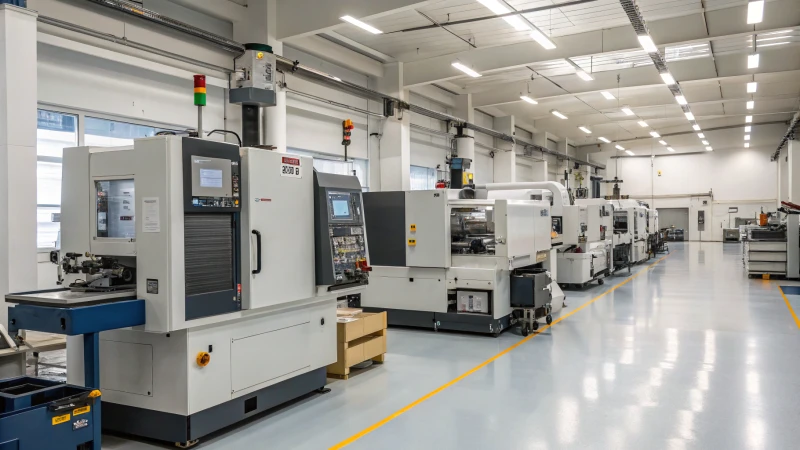
Precision in Manufacturing Processes
In manufacturing, precision is synonymous with accuracy and attention to detail. It involves the accurate shaping and sizing of components to meet specific standards. This meticulous approach ensures products fit perfectly into designs, enhancing their overall performance.
For example, in the aerospace industry4, even the slightest deviation in component size can lead to significant issues, such as increased drag or poor fuel efficiency. Precision ensures that every piece functions as intended without costly errors.
The Role of Precision in Product Durability
Precision directly contributes to product durability. When components are manufactured with exact specifications, they fit together seamlessly, reducing the likelihood of wear and tear. This is particularly important in products exposed to extreme conditions, like outdoor equipment5.
Moreover, precise manufacturing minimizes the need for rework or adjustments during assembly, leading to a more efficient production process and a longer lifespan for the final product.
| Aspect | Benefit |
|---|---|
| Accurate Sizing | Reduces material waste |
| Exact Fit | Minimizes assembly errors |
| Consistent Quality | Enhances brand reputation |
Reducing Waste Through Precision
By adhering to strict tolerances, manufacturers can reduce material waste significantly. Each piece is designed to fit the required application precisely, thus minimizing offcuts and rework. This approach not only optimizes material utilization but also lowers production costs.
In industries like automotive manufacturing6, precision is key to maintaining competitive pricing while ensuring high-quality outputs. This balance is essential for companies seeking to maximize their ROI over the product’s lifecycle.
Precision as a Competitive Advantage
Companies that prioritize precision in their manufacturing processes often enjoy a competitive edge. Precision allows for seamless integration of products into complex systems, which is vital for industries requiring high standards of functionality and safety.
Manufacturers that excel in precision can offer superior products, building customer trust and loyalty. By choosing suppliers known for their precise craftsmanship, businesses can enhance their market position and foster long-term relationships with clients.
In summary, precision is not just a technical requirement; it’s a strategic asset that can significantly influence product quality and business success.
Precision reduces material waste in manufacturing.True
Precision ensures components fit correctly, minimizing offcuts and rework.
Lack of precision can enhance product durability.False
Imprecision leads to poor fit, increasing wear and tear on components.
Can Precision Reduce Manufacturing Costs?
Precision in manufacturing isn’t just about accuracy; it’s a game-changer for cost reduction. By minimizing errors and maximizing efficiency, precision can drastically cut production costs and boost profitability.
Precision reduces manufacturing costs by minimizing errors, lowering material wastage, and enhancing operational efficiency. It leads to fewer reworks, less downtime, and optimal resource utilization, ultimately improving the bottom line.
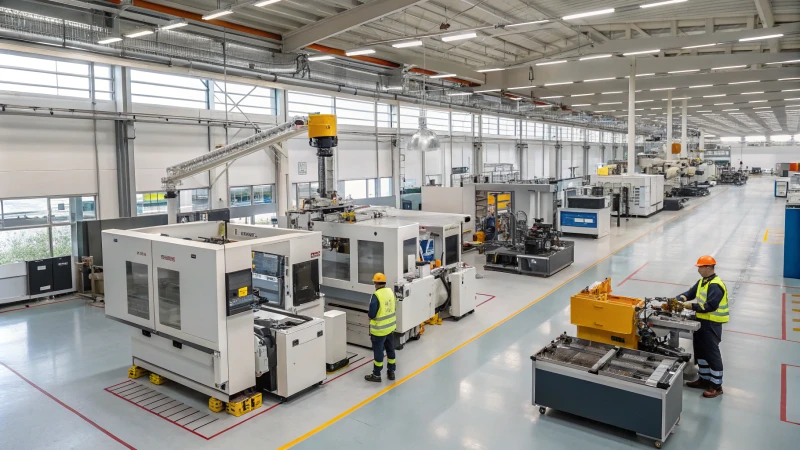
The Role of Precision in Cost Reduction
Precision in manufacturing ensures that every component meets exact specifications, reducing the need for rework and saving valuable time and resources. Accurate production processes lead to less waste, as materials are utilized efficiently, preventing costly excesses.
| Factor | Impact on Cost Reduction |
|---|---|
| Minimized Errors | Fewer defective products mean less rework and scrap costs. |
| Optimized Resources | Precision leads to efficient material use, reducing waste. |
| Enhanced Productivity | Streamlined processes increase output with lower labor costs. |
Precision in Technology Integration7
Incorporating advanced technologies like CNC machines8 allows manufacturers to achieve higher precision levels. These machines automate complex tasks with remarkable accuracy, reducing human error and improving production speed.
Moreover, technologies such as AI-driven quality control9 systems can detect defects early, allowing for real-time adjustments and ensuring consistent quality without additional manual inspection costs.
Industry Applications of Precision
Different industries leverage precision to address unique challenges:
- Automotive: Tight tolerances ensure parts fit perfectly, reducing assembly time and costs.
- Aerospace: Precision is crucial for safety and performance, minimizing costly failures.
- Medical Devices: Accurate components enhance reliability, cutting down on potential liabilities.
Case Study: Automotive Industry10
In the automotive sector, precision machining helps reduce vehicle weight by using materials more effectively, leading to fuel savings. This precision-driven approach not only lowers manufacturing costs but also enhances vehicle performance.
Benefits Beyond Cost Savings
Precision manufacturing doesn’t only cut costs; it also enhances product quality and lifespan. Customers perceive higher value in products built with precision, leading to improved market competitiveness and customer satisfaction.
Investing in precision also fosters innovation, as it opens up possibilities for creating complex designs that were previously unfeasible due to limitations in manufacturing accuracy.
| Benefit | Description |
|---|---|
| Improved Quality | Products meet exact standards, reducing returns and warranty claims. |
| Innovation Potential | Enables complex design implementations with assured accuracy. |
Precision reduces manufacturing costs by minimizing errors.True
Precision minimizes errors, leading to fewer defective products and lower rework costs.
Advanced technologies do not improve precision in manufacturing.False
Technologies like CNC machines enhance precision, reducing human error and increasing efficiency.
What Industry Standards Govern Aluminium Extrusion?
Aluminium extrusion is governed by stringent standards ensuring quality, precision, and safety. These standards dictate everything from material specifications to dimensional tolerances, ensuring uniformity across industries such as automotive, aerospace, and construction.
Aluminium extrusion standards, like ASTM B221 and EN 755, govern specifications, tolerances, and quality assurance. These standards ensure consistent product performance and regulatory compliance across diverse industries.
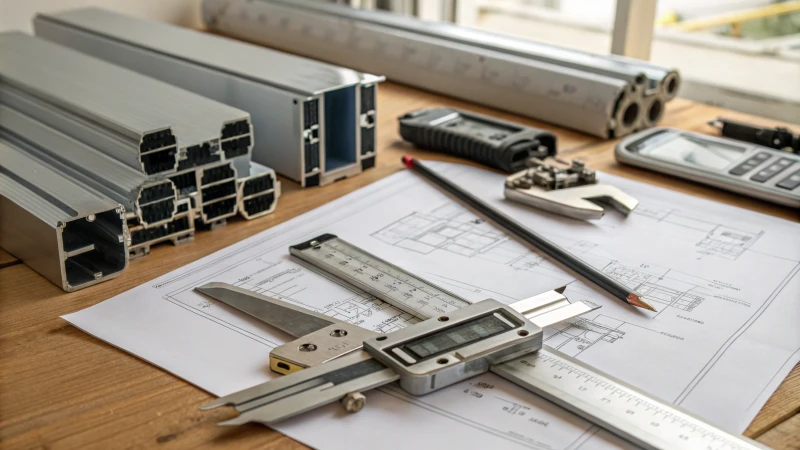
Key Standards in Aluminium Extrusion
Aluminium extrusion is governed by several crucial standards to ensure high quality and precision in production. Among the most recognized is the ASTM B22111, which specifies requirements for aluminium and aluminium-alloy extruded bars, rods, wires, profiles, and tubes. It outlines the necessary mechanical properties and tolerances.
Another important standard is EN 75512, a European standard detailing the mechanical properties of extruded products from aluminium and its alloys. EN 755 is divided into multiple parts addressing different forms such as tubes, bars, and profiles.
Understanding Material Specifications
Material specifications are essential in defining the chemical composition of aluminium alloys used in extrusion. Standards like AA Standards13 provide comprehensive guidelines on alloy designations, chemical compositions, and mechanical properties.
These specifications help manufacturers choose the right alloy for their application, ensuring compatibility with intended use cases such as construction or aerospace.
Dimensional Tolerances and Quality Assurance
Dimensional tolerances in aluminium extrusion are critical for product accuracy and functionality. Standards ensure these tolerances are maintained through guidelines like the ISO 276814. This standard offers a system of tolerances for general purposes applicable to a wide range of materials.
Quality assurance is another critical aspect governed by standards. The ISO 900115 certification assures that an organisation has a quality management system in place to consistently provide products that meet customer and regulatory requirements.
| Standard | Description | Applications |
|---|---|---|
| ASTM B221 | Mechanical properties for aluminium extrusions | Automotive, Construction |
| EN 755 | Properties for aluminium alloy profiles | Aerospace, Construction |
| ISO 2768 | General tolerance standards | Manufacturing |
Regulatory Compliance and Safety
Compliance with these standards ensures not only product quality but also safety in application. Adhering to the REACH Regulations16, for instance, ensures that materials used do not pose harm to human health or the environment. This compliance is vital for companies aiming to operate within European markets.
Manufacturers must also consider other safety standards such as OSHA guidelines17, which govern workplace safety in manufacturing environments.
Understanding these standards provides a foundation for selecting the right materials and processes, ensuring products meet the high demands of modern engineering applications while maintaining compliance with international regulations.
ASTM B221 governs aluminium extrusion tolerances.True
ASTM B221 specifies mechanical properties and tolerances for aluminium extrusions.
ISO 9001 is unrelated to aluminium extrusion standards.False
ISO 9001 ensures a quality management system for consistent product quality in extrusion.
How Does Technology Enhance Precision in Extrusion?
Discover how cutting-edge technology revolutionizes precision in extrusion processes, ensuring superior quality and efficiency. Explore advanced tools that guarantee exact specifications in aluminum profiles and more.
Technology enhances precision in extrusion through advanced machinery, like CNC machines and automated measurement systems, which ensure accurate shaping and sizing. This results in improved product quality, reduced waste, and compliance with industry standards.
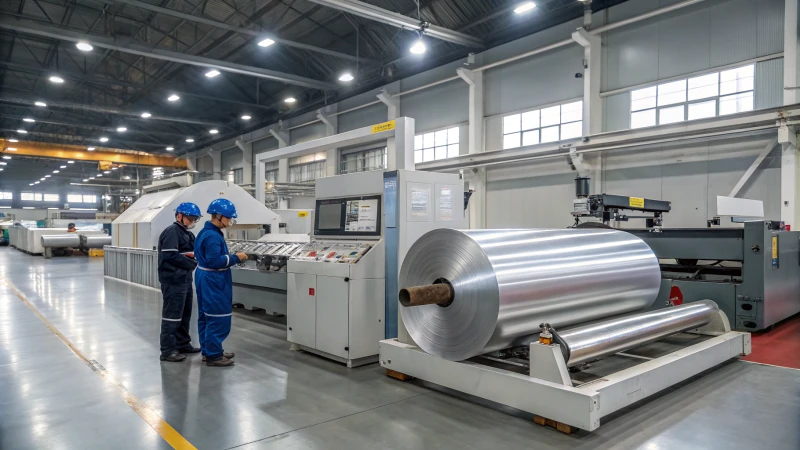
Advanced Machinery: CNC and Beyond
Modern extrusion processes heavily rely on computer numerical control (CNC) machines. These machines offer unparalleled precision by automating the control of machining tools. CNC technology ensures that each piece adheres to exact specifications, reducing human error and variability.
For instance, CNC machines can be programmed to replicate complex shapes consistently. This reduces waste and ensures every part fits perfectly within the specified tolerances. The reliability of CNC technology is why industries such as aerospace and automotive lean heavily on it for precision extrusion18.
Automated Measurement Systems
Automated measurement systems play a critical role in verifying the accuracy of extruded products. These systems use laser or vision-based technology to measure dimensions in real-time. Immediate feedback enables manufacturers to make necessary adjustments instantly, preventing defects from progressing down the production line.
The integration of such systems means maintaining high precision without slowing down production speeds, thus enhancing both efficiency and quality. Quality control19 becomes more streamlined with such technology, reassuring clients of the consistency across batches.
Innovations in Quality Control
The advent of smart quality control tools has been transformative. These tools use AI algorithms to predict potential issues before they arise, allowing for proactive adjustments. They analyze data from previous runs and continuously optimize processes for better outcomes.
A key feature of these innovations is their ability to learn from past data, adapting to changes in material properties or environmental conditions. This adaptability makes them invaluable in maintaining strict industry standards required in sectors like medical devices and electronics.
Real-World Applications: A Look at the Automotive Industry
In automotive manufacturing, precision in extrusion is non-negotiable. High-performance vehicles require components that fit flawlessly. Technology aids in this by providing simulations and models that anticipate how materials will behave under stress.
This predictive modeling helps engineers design extrusions that are not only precise but also durable, leading to safer and more efficient vehicles. For companies like Sinoextrud, staying ahead with technological advancements ensures competitiveness and customer satisfaction.
| Technology | Benefit |
|---|---|
| CNC Machines | Consistent and precise shaping |
| Automated Systems | Real-time measurement and adjustment |
| AI Quality Control | Predictive issue detection and optimization |
By embracing these technologies, businesses can enhance their production capabilities20, resulting in better product integration and longevity. This technological evolution continues to push the boundaries of what’s possible in extrusion processes.
CNC machines reduce human error in extrusion processes.True
CNC machines automate tool control, ensuring precise specifications.
AI tools in quality control cannot predict extrusion issues.False
AI algorithms analyze data to predict and prevent potential issues.
Conclusion
Precision in aluminium extrusion is vital for product quality, reducing waste, and ensuring reliability in industries like automotive and aerospace, enhancing competitive advantage through advanced technology.
-
Understanding tolerances ensures that you select components that fit accurately, minimizing potential rework and enhancing product quality. ↩
-
Explore how industries benefit from precise extrusions, which lead to improved reliability and performance of end products. ↩
-
Discover key factors to consider when selecting a supplier, ensuring reliable delivery of high-quality extrusions. ↩
-
Explore how precision impacts efficiency and safety in aerospace engineering. ↩
-
Learn why precise components are crucial for durable outdoor gear. ↩
-
Understand how precision reduces costs and enhances quality in car production. ↩
-
Explores how integrating new technologies can boost precision and efficiency. ↩
-
Learn how CNC machines enhance accuracy and reduce manual errors. ↩
-
Understand the role of AI in maintaining high-quality standards with precision. ↩
-
Discover how precision machining impacts cost-efficiency in automotive manufacturing. ↩
-
Explore this link to understand mechanical property requirements critical for precision manufacturing. ↩
-
Learn about European standards essential for aerospace and construction industries. ↩
-
Find detailed guidelines on choosing the right alloy for your needs. ↩
-
Discover general tolerance systems applicable across various materials. ↩
-
Understand how this certification ensures quality and regulatory compliance. ↩
-
Ensure your materials are safe for human health and the environment. ↩
-
Gain insights into workplace safety regulations for manufacturers. ↩
-
Explore how CNC technology minimizes human error in extrusion processes, enhancing precision. ↩
-
Understand how real-time measurement systems optimize quality control in extrusion. ↩
-
Discover how AI-driven tools optimize production by predicting and preventing issues. ↩



